Growing up with an immigrant family meant eating authentic, home cooked Mexican food. Mole, chiles rellenos, chilaquiles, menudo, and plenty of guisados were staples in my house. All through elementary, junior high, and well through high school, my American friends would visit after school on a regular basis and I soon caught on: they came over to eat the chips and salsa, not to play Nintendo 64.
As a child, life seems much more wondrous, and the simplest of pleasures feed our curious minds. For my friends, that might have been being served tacos by my mother but, in my case, the cheeseburger simply crushed anything and everything on the food spectrum (even today, I put it on a pedestal as life’s greatest pleasure). While most kids my age were eating them on a daily basis for their parents’ ease and convenience, in my world eating a cheeseburger was a family event and quite a treat.

I would patiently anticipate my father’s days off—which were rare considering he often worked more than one job to keep the family afloat—for the chance of a family outing to my sanctuary, my muse, the fast food establishment that housed the Holy Grail of all burgers: the Western Bacon Cheeseburger. Or so I thought, I was like ten years old after all.
Life went on and like many others (or I’d like to think so), fast food has become less of an option nowadays. I find myself handing my money to Whole Foods far more often. The fast food burger of my childhood fades into a distant memory holding much of my treasured pleasures, much like a vault—I’m fairly certain that’s where I’ll find reruns of Tom & Jerry. When the hunger pangs strike demanding juicy ground beef, melted cheese, ketchup (a travesty without it), and a bun, I no longer venture to my childhood burger joints where the Famous Star or the Golden Arches reign supreme.
Down Sawtelle Blvd. in West Los Angeles, there is a place that is less of a fast food establishment and more of a retreat for those seeking nostalgic sentiments. Plan Check is good ol’ American comfort food with a modernized, sophisticated twist. On the creative and culinary front, Chef Ernesto Uchimura grills and builds burgers with a Willy Wonka mentality. On the surface, his creations titillate the palate, like his fried jidori chicken served with yam preserves and a pickled okra, or the reason why I find myself in Ernesto’s playground: the PCB (Plan Check Burger). But dig deeper, and you’ll find nostalgic memories reconstructed with technical precision like his ketchup leather, a sheet of dehydrated ketchup the size of a slice of American cheese that helps keep the beef’s juices intact and avoiding a soggy bun.
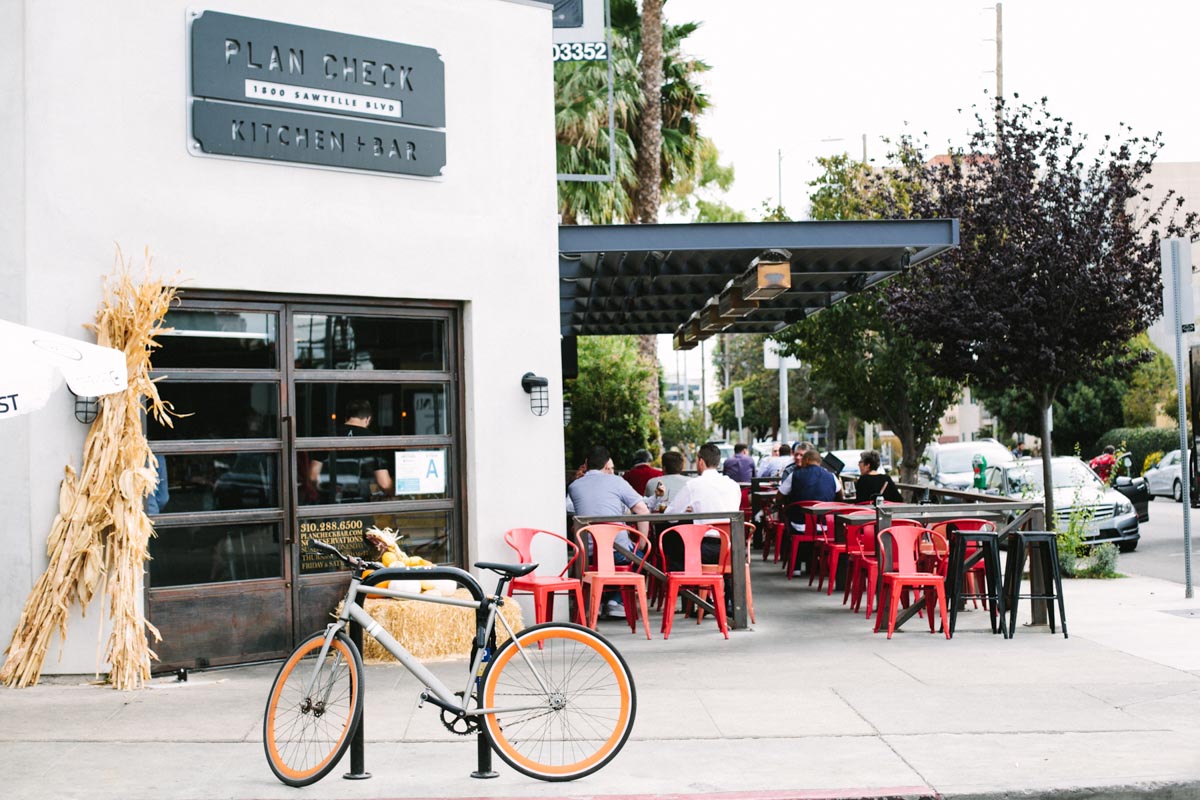

Like a curious child marveling over cheeseburgers, I wanted to know more about the players behind this burger bar. I sat down with Chef Ernesto Uchimura and Terry Heller, restaurateur and partner, to learn about their journey and the anatomy of their burger.
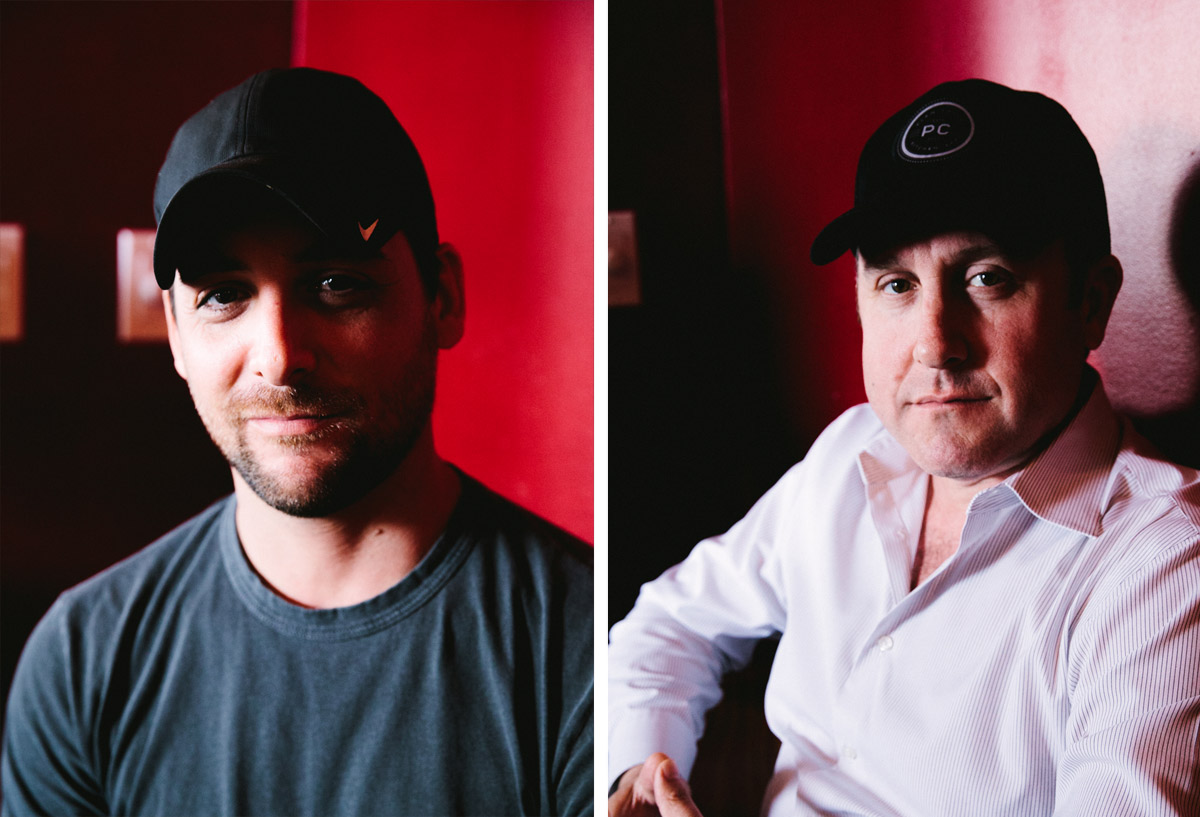
Let’s start from the beginning. Where’d you grow up?
Ernesto Uchimura: I grew up here in Los Angeles, in Culver City. I was born in Argentina. My parents are from Argentina too, and we came here when I was less than one year old. We went straight to L.A.; I grew up here on the west side.
Terry Heller: The suburbs. I grew up in the Westlake Village area. Right out of high school, I moved to Los Angeles. I spent a good amount of time in Beverly Hills and Marina Del Rey, but ultimately went back to the suburbs when I started having kids.
Did food always play a big role growing up?
Ernesto Uchimura: Yes. I think it did for most people. Especially when you have immigrant parents; they always bring their cultural foods here with them. That’s a big part of growing up and a big part of your identity. Of course I grew up around American food, but food from Argentina, food from the Japanese side of my father’s family, and food from my mom’s Jewish side played a part in my childhood growing up here.
As I was trying to figure out what I wanted to do with my life, I always knew I wanted to do something in a creative space and this is where I ended up: in the culinary world. Cooking fascinated me. The fact that you could take something and through applying heat and preparation, change it into something else. There’s so much involved in cooking that I was attracted to it from the creative to the chemistry-side of things. At the time it seemed very magical that you could approach food in different ways and always come up with a different result.
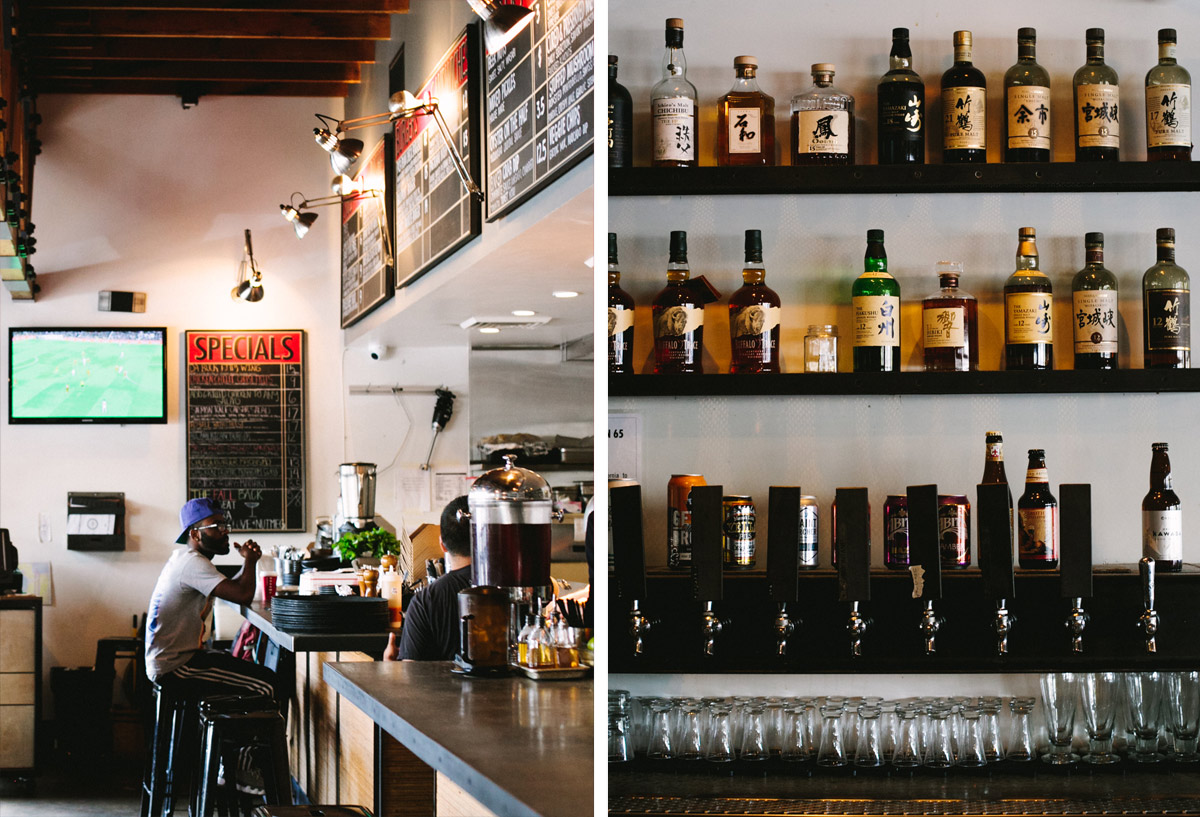
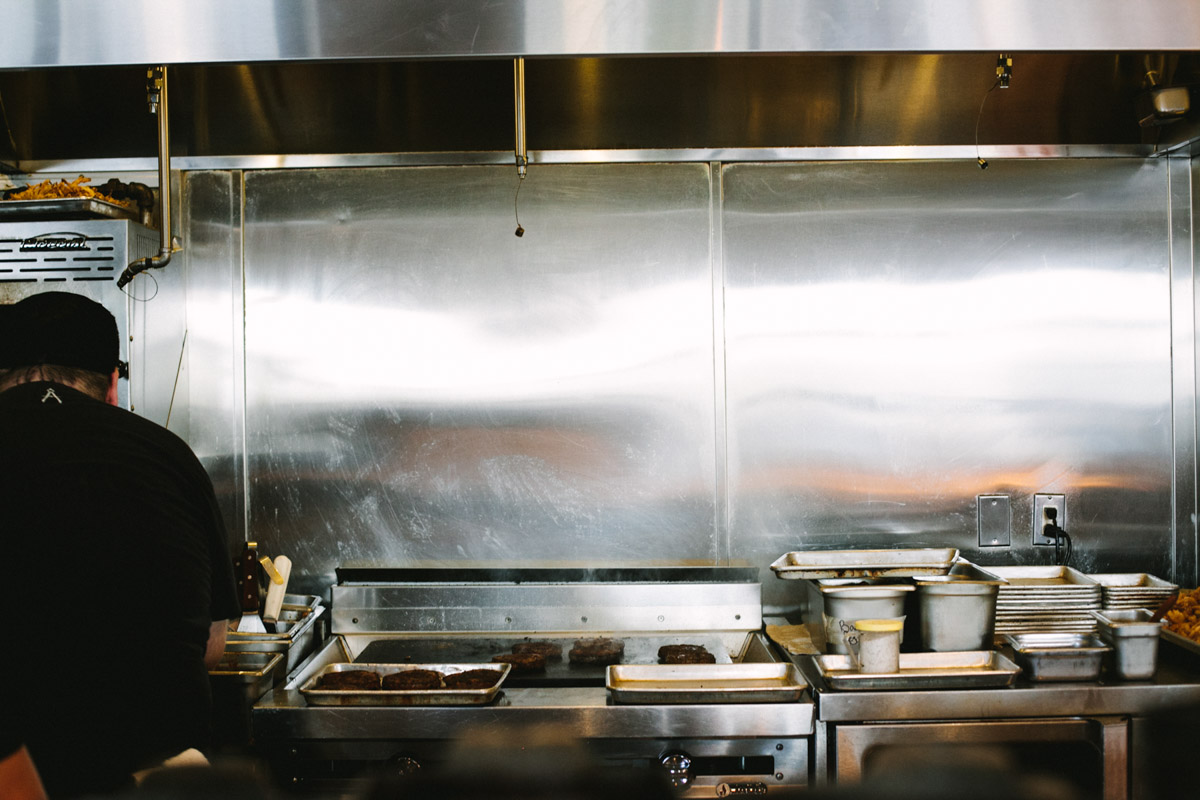
Terry Heller: Of course I loved food. But I also loved the idea of experience. When we lived in the suburbs we would take trips to Olvera Street or Chinatown. My parents would seek out these places. There are a lot of really great memories of us jumping in the car going to Tito’s Tacos or going to some obscure Chinese restaurant. We always had a fascination with traveling to find these cool places. My parents were never into fine dining. They were more into the blue collar, authentic, ethnic places. If we were in New York City they’d say, “Let’s go find the best pasta.”
What makes a relationship fruitful between owner and chef?
Terry Heller: For me it’s understanding what your lane is. I know what I’m really good at and I try to focus on that. I have a good sensibility for marketing. I have a good sensibility for knowing what the people want out there.
He [Chef Ernesto] obviously had a good track record with what he’d done in the past. I had a good instinct for him and what he brought to the table.
We’re pretty similar. I wasn’t a skater kid; I was more on the surf side. Ernesto was cut from the same cloth in the sense that he was into skating and that stuff, and into hip hop. I think when it comes to making a menu—like when we’re doing our collaborations with Stussy—Ernesto is always spot on on my sensibilities and what I would like. The food always touches upon his level of being very creative. Yet it’s sort of routed in our childhood.
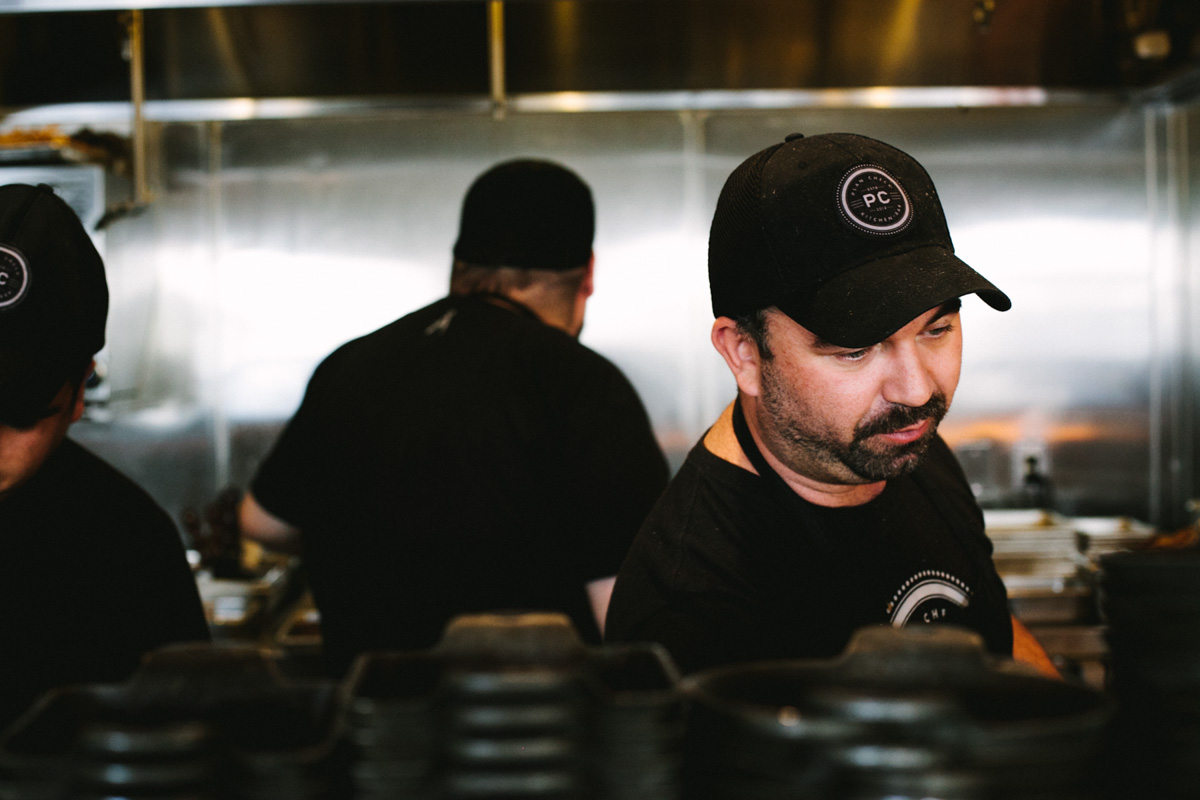
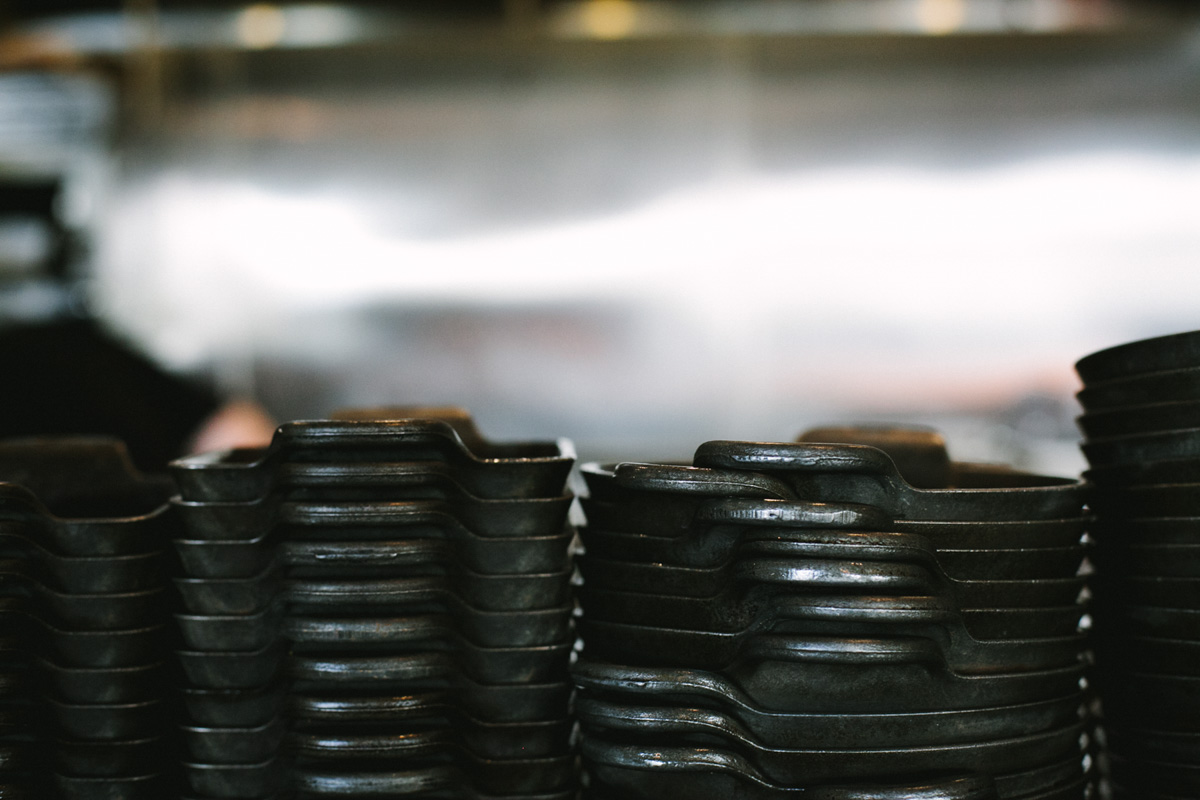
Do you think the menu is influenced by the neighborhood you’re in?
Terry Heller: When we did this, everyone told me we were stupid. People told me it was corny. People told me, “If you don’t do Asian you’re going to fail.” Even people who are really influential in my life—big restaurant guys.
Ernesto Uchimura: I think you have to pay attention to the neighborhood you’re in, absolutely. Especially considering when I was thinking about the concept I wanted to make sure we were a neighborhood restaurant first and foremost, because they’re going to be your everyday people. Other people who come from outside the neighborhood are icing on the cake. It’s important to pay attention to the neighborhood.
So in the early days when we first decided to work together and were building this place out, I took him up the street to my apartment. I was doing a lot of the recipes there. I would prep at my house and then I would come down and cook at our office right next door here in a converted house where we took the garage as our office. There was an outdoor fireplace, and I would come and cook the burgers right in the fireplace. I’d bring my cast iron there, set up bricks with charcoal under it, and I’m cooking PCBs [Plan Check Burgers] right out of a fireplace caveman style.


Let’s talk about the Plan Check Burger. Where did the inspiration come from? Walk me through the creative process.
Ernesto Uchimura: I’ve created so many burgers over the years. So when I was thinking about the burgers I wanted to put here on the menu at Plan Check, I wanted to go back to the roots of comfort and why I love a burger. It started with a classic, old school burger that has ketchup, pickles, onions, cheese and meat. I wanted to take that concept of the very simplistic, old school burger and modernize it. So I took that comfort dish, as a meal that I love, and I labored to make it up-to-date and modern, obviously with my palate taken into account. I don’t love that same burger like I used to, but I love it up here in my mind. I used to love them as a boy, but I don’t love them as much now. I wanted to revisit it.
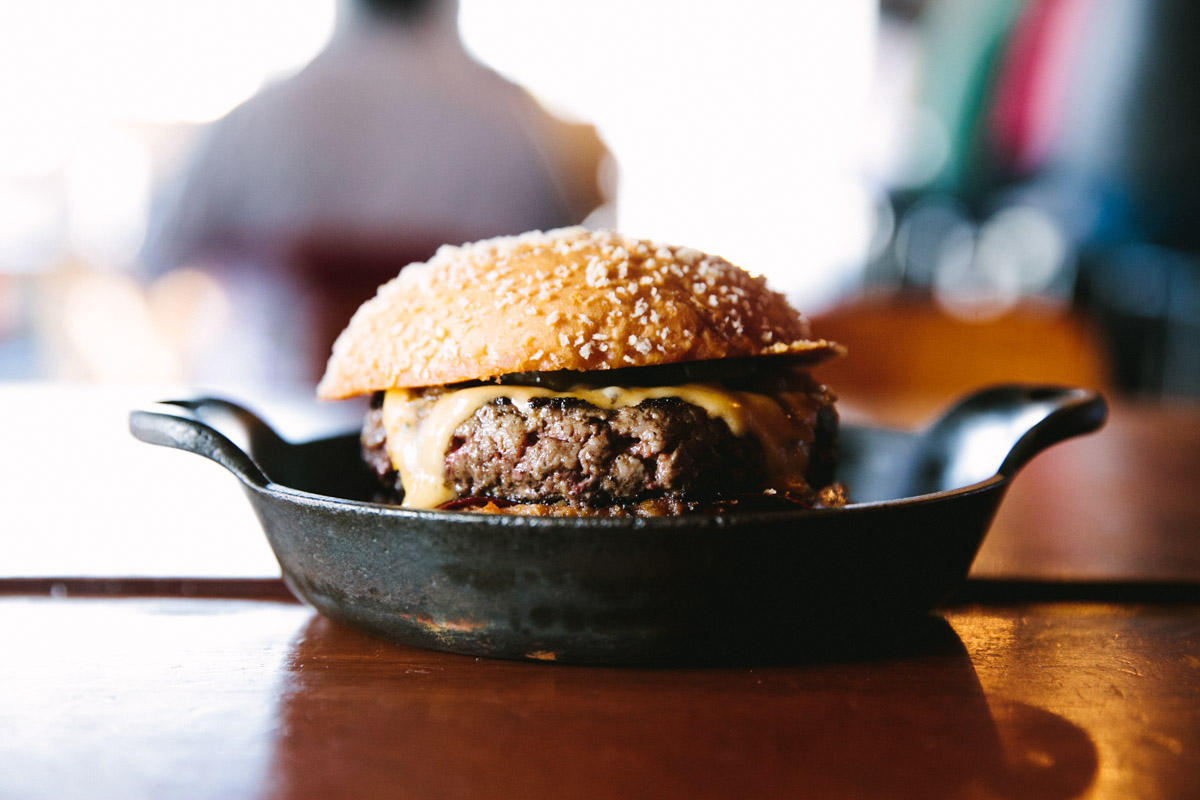
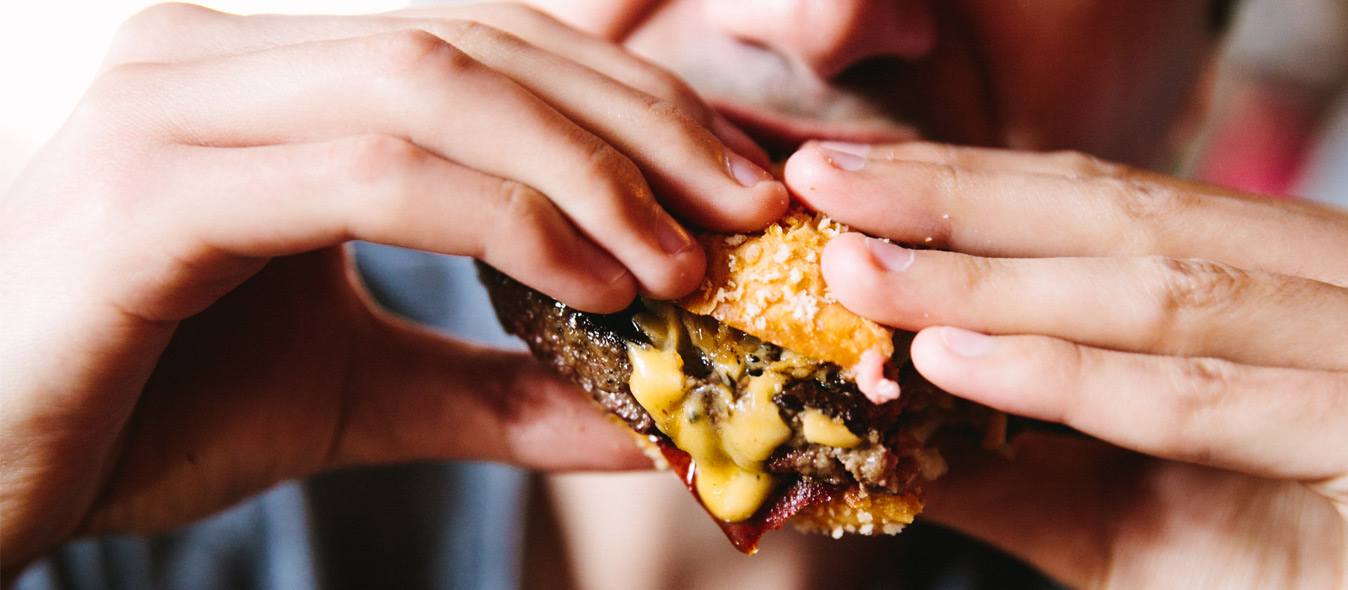
The beef is probably the most important ingredient of a burger. I’m constantly changing the blend. I’m constantly tasting different cuts of beef. We bring in whole cuts of steak here, we break it down in-house, and we grind it at least two times a day, if not more depending on the business.
So it’s ultra fresh—ground fresh. We can control the quality of the beef that way. We can control any bacteria levels that way too because it’s not being ground up out of house. So it starts there.
Then the blend depends on my taste. Meat is different at different times of year. Sometimes the cow that was slaughtered was raised on a particular ingredient that made it fatty, or maybe it was really grassy when it was slaughtered, or maybe the fat content was really low or the water content was really high. The blend is constantly changing when we take those things into consideration.
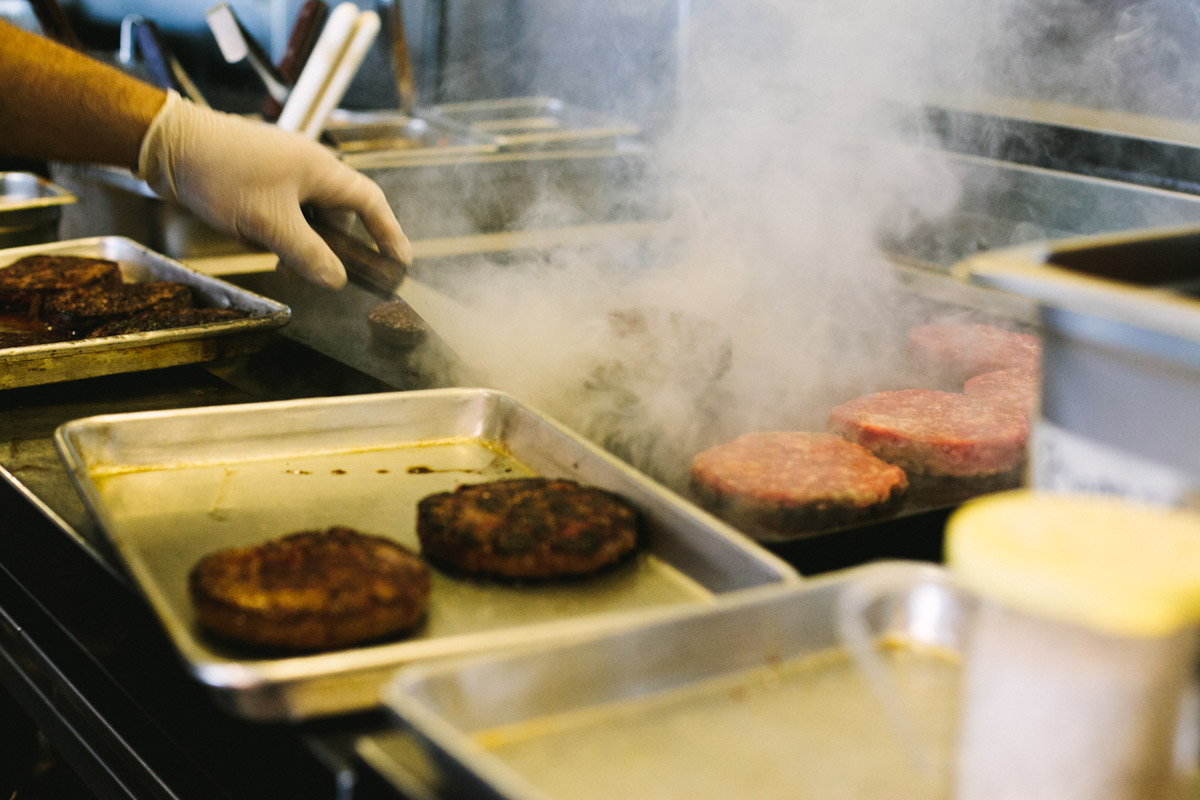
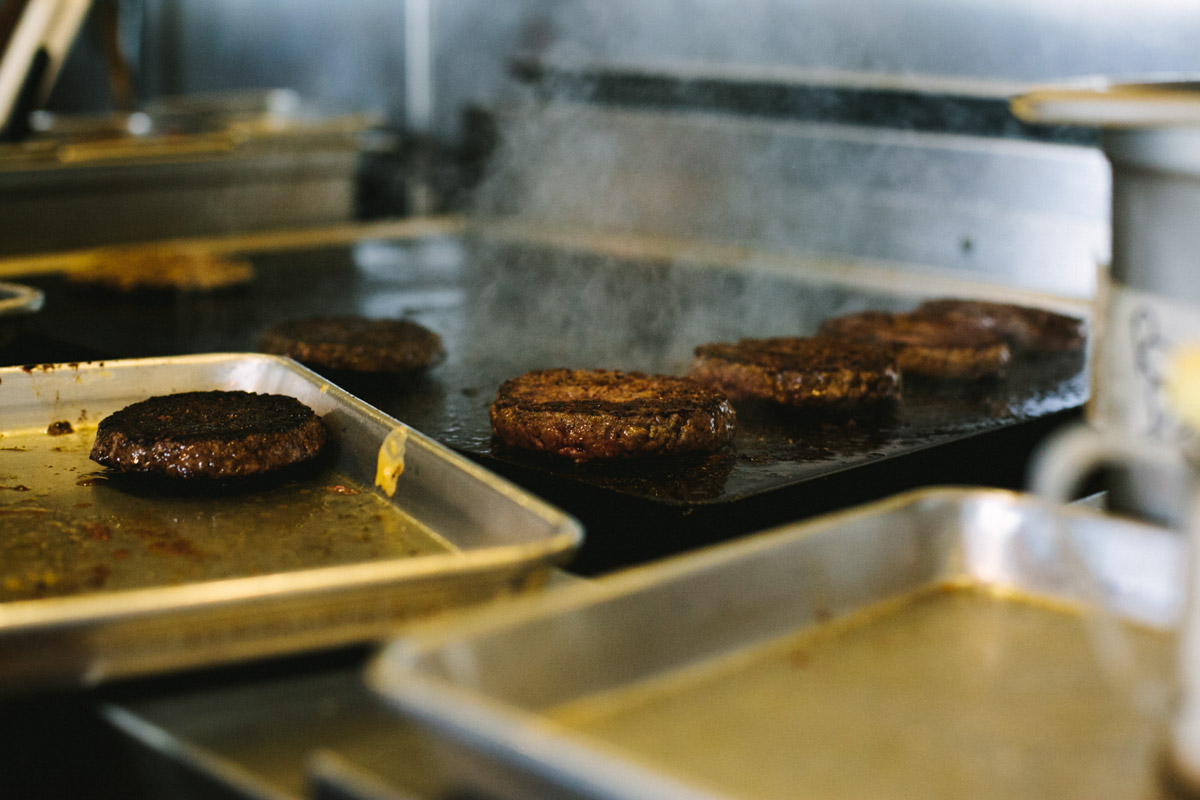
That’s the next step: getting the blend just right and constantly tweaking it out and making sure the quality is there—the fat content, the moisture, the flavor profile, the mineral profile and also the cost profile too because we’re still running a business here. I could create the world’s perfect blend, but it might cost me an arm and a leg and we’d charge $30 for it, and that doesn’t work for a business model. It’s this fine line between all those things and then trying to make it affordable too—for us and the consumer.
The third step is really respecting it once you put in all this time and effort in sourcing these ingredients for tasting. The next step is seasoning and cooking it. So what do we do? We have a very specific flat top that we use to cook our burgers that cooks it exactly how I want it. We use a specific kind of salt and pepper. We don’t do anything fancy. It’s all about the size of the salt and the flavor profile of the pepper when it’s grounded. That would be the third step: respecting all the work you’ve done to get to that point.
“Everything I create and cook, I’m cooking for myself. How I would want it and how I serve the meat, that’s exactly my mentality.”
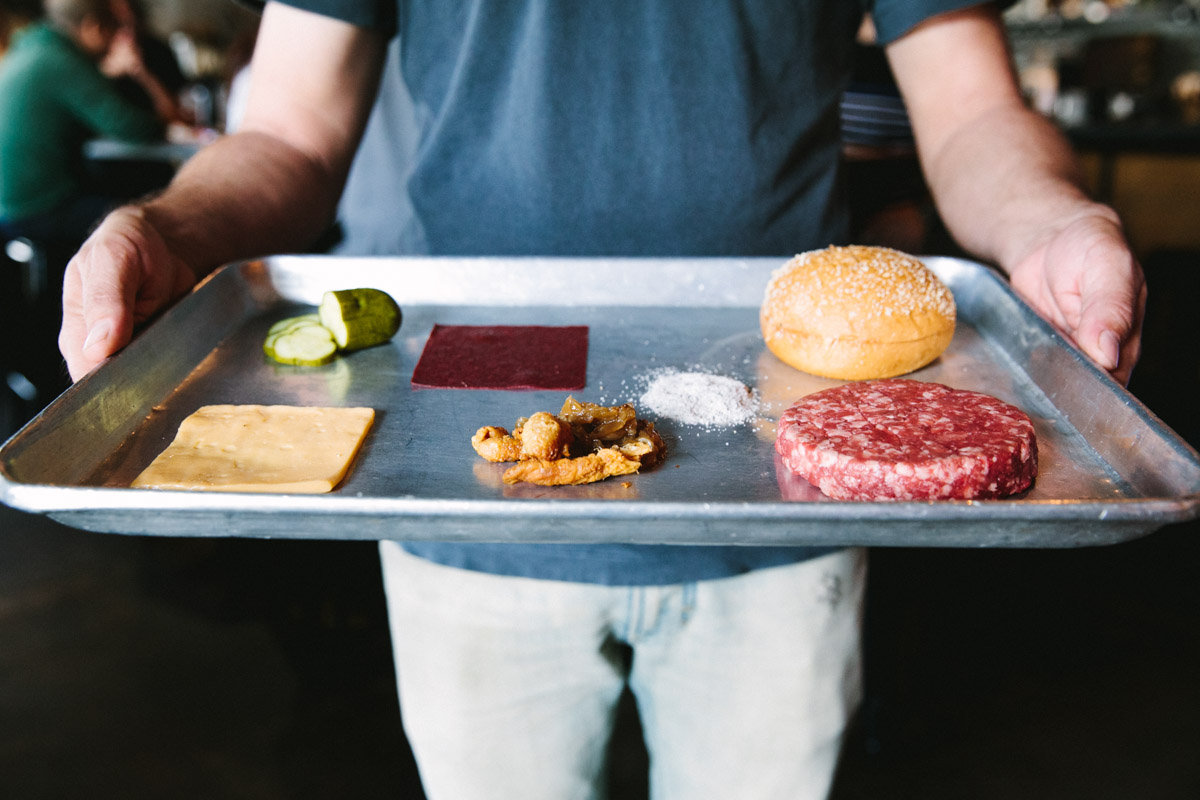
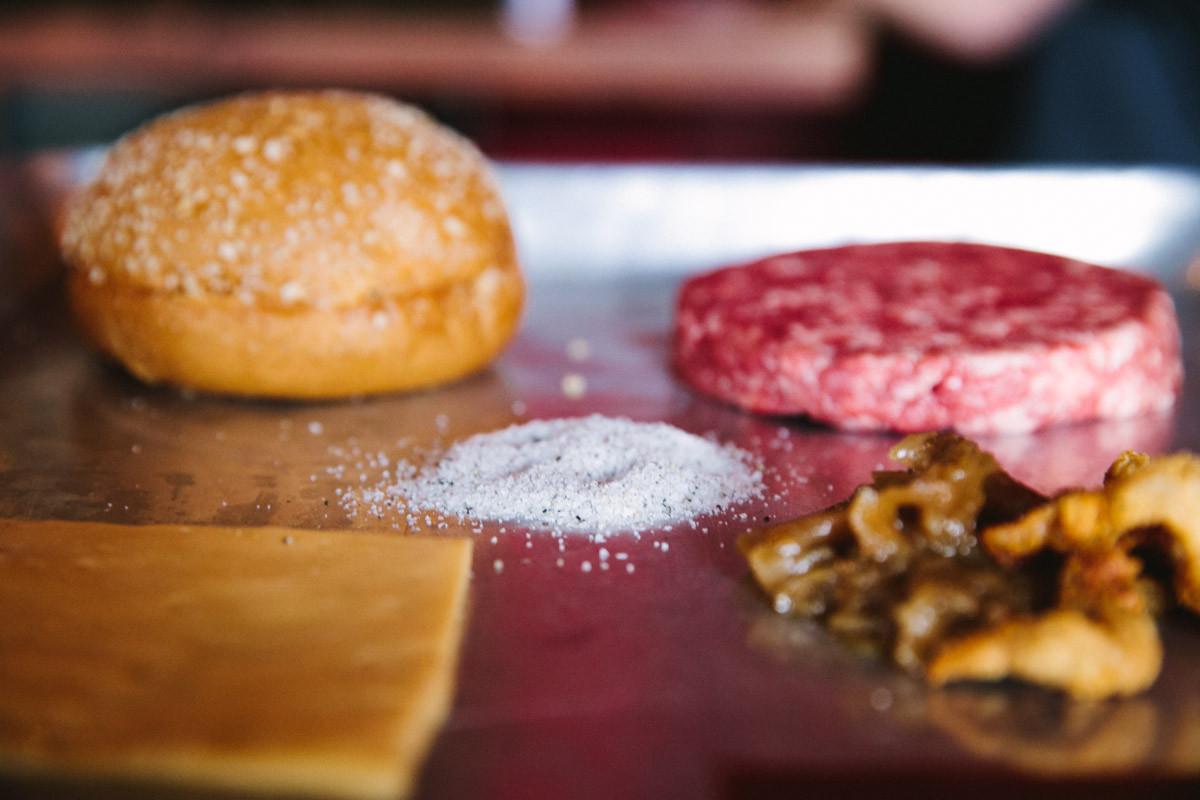
Once you have that done, you can cook the beef correctly. Then we go to the bun. The bun is important in a burger, but I think it gets overlooked a lot. But when you have a shitty bun, people notice. When you put a ciabatta bun on your burger, everyone says the bun is too hard. But when you have the perfect soft potato or white bun, nobody really mentions it because it just becomes this perfect castle to get that perfect beef and all the other toppings in your mouth.
Terry Heller: There was a period of two or three months where we’d taste all different types of bread. That bun didn’t happen overnight. He was so particular about what he wanted. He would taste it, and I don’t have that type of palate to say, “This has 10-percent rye,” or “This has 30-percent rye.” He literally must’ve had… I don’t know how many samplings. There would be a guy bringing a bag of bread every day.
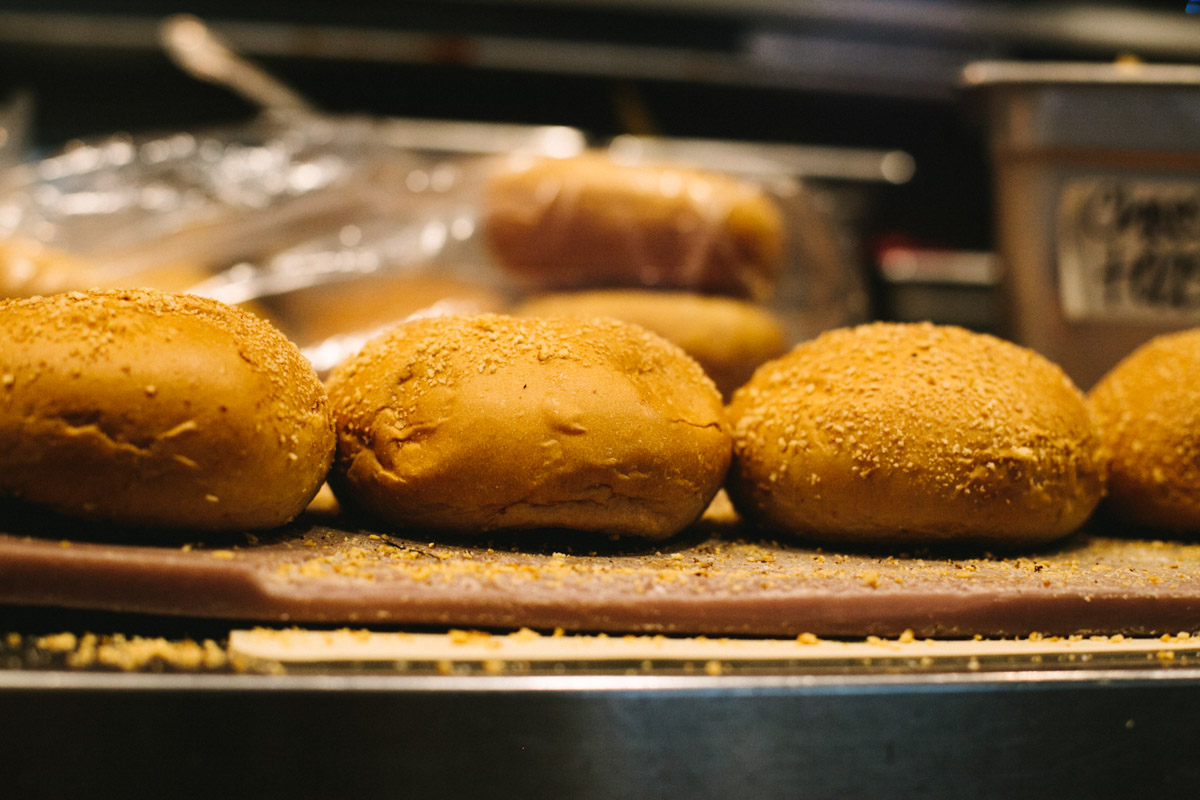
Ernesto Uchimura: From there we go to the toppings. The ketchup leather has been in development for a while, and its introduction was here at Plan Check. I’ve been doing burgers for so long—especially gourmet burgers—I find that the soggy bun syndrome is an epidemic in the burger world. I wanted to combat that somehow. For years and years you heard “spread mayo” on the bun, right? Because oil and water don’t mix. It works, but it doesn’t work that great. Halfway through the burger the bottom bun disintegrates and you’ve got to use a knife and fork. A lot of people think it’s gimmicky, but it really comes out of a need to solve a problem. And the problem was to keep the juices at bay.
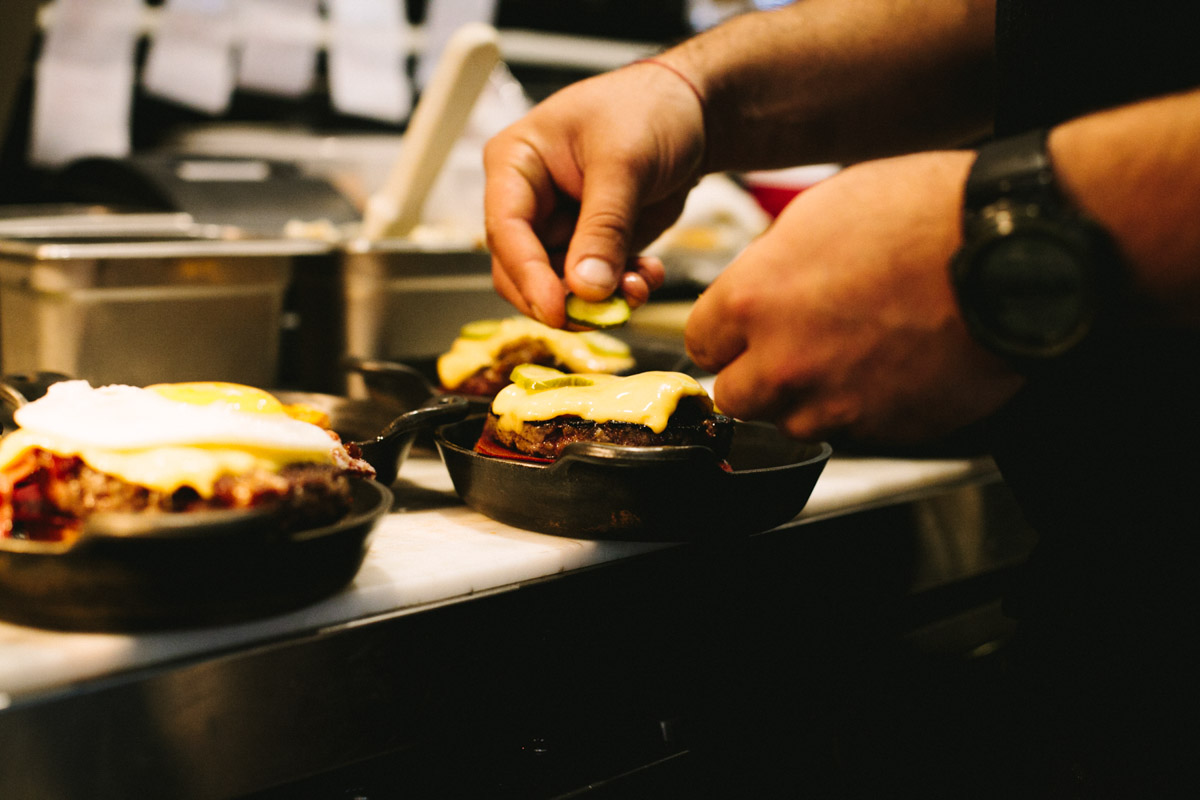
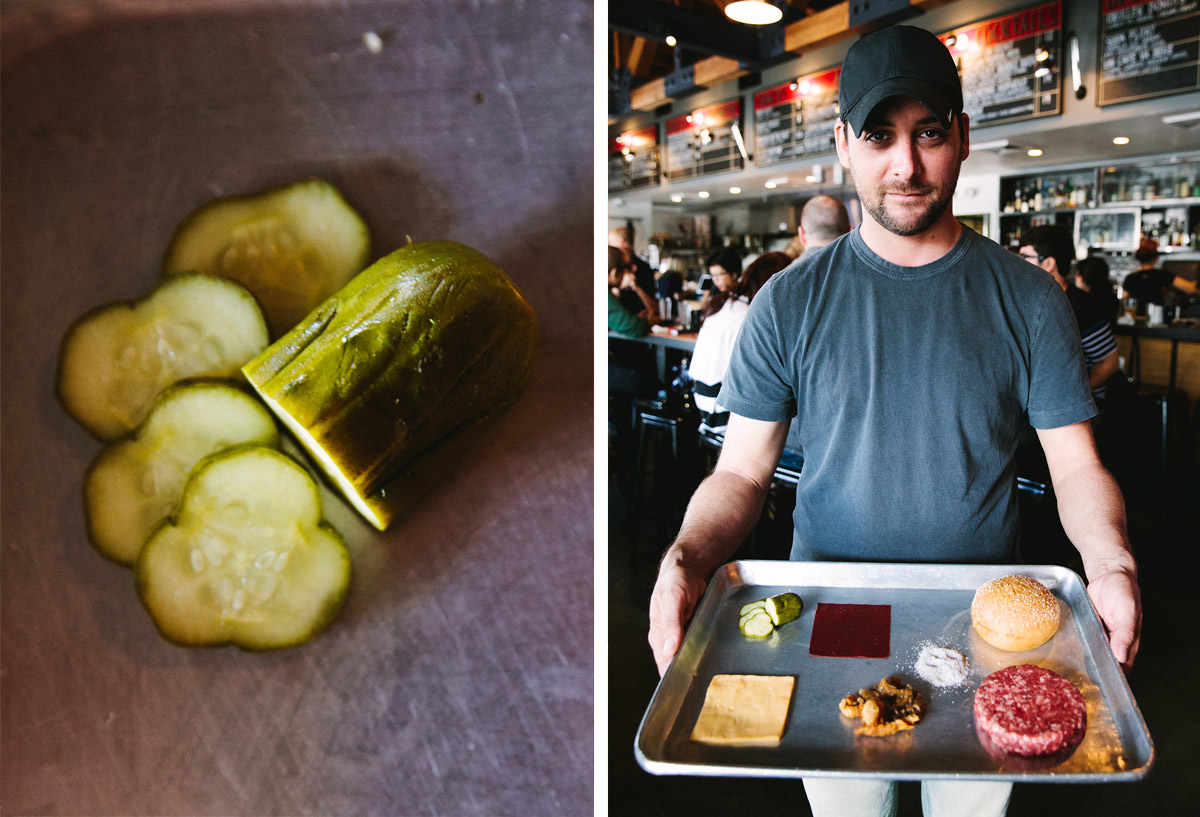
Terry Heller: When people come to Plan Check and they hear the story—there’s no burger in our name. I wouldn’t call it a burger place; I don’t want it to be just a burger place. But the name and all this other stuff is really thought through, it’s not just that moment but all of our experiences. That’s what I appreciate about what Ernesto does. What he does, like the KBBQ—which is a Korean BBQ burger just for our downtown location—it’s not like he’s like, “I’m going to throw all these Korean ingredients together and make it work.” There’s a real thought process. And that’s why I respect him. To me, taking a classic and flipping it is a lot harder than inventing some dish, throwing a bunch of stuff together and claiming it.
Ernesto Uchimura: Everything I create and cook, I’m cooking for myself. How I would want it and how I serve the meat, that’s exactly my mentality.





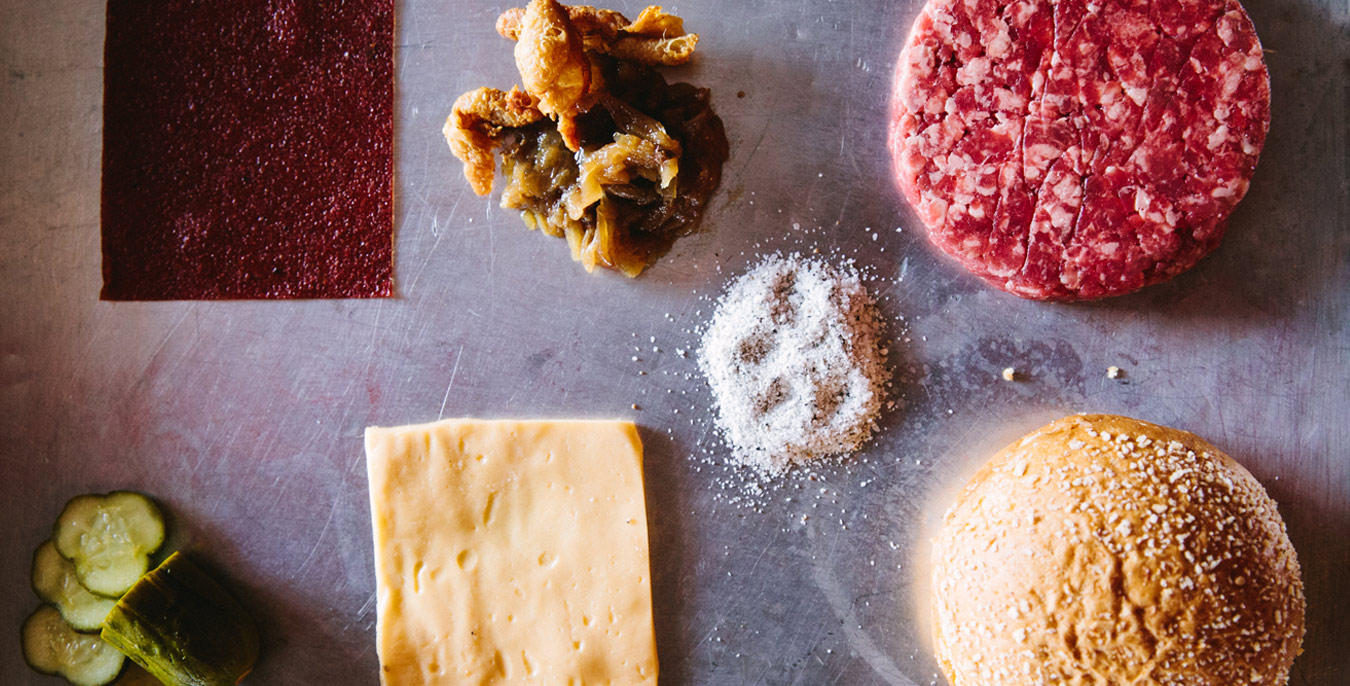

Our comments section is for members only.
Join today to gain exclusive access.